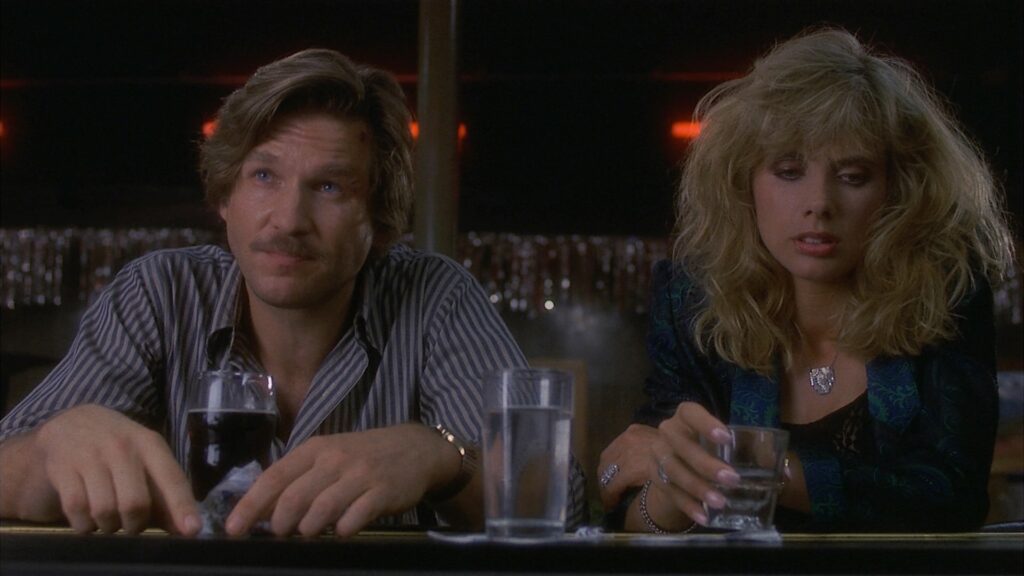
8 Million Ways To Die (1986) could have been one of Hal Ashby’s greatest films, but he was fired before post-production could begin. Ashby’s great talent was to shoot his films with the editing in mind. Once Ashby is removed from that process, his films invariably suffer. There are some uniquely staged scenes in 8 Million Ways To Die that were clearly shot so that they could only be edited one way and manage to preserve Ashby’s original vision to some extent.
Aesthetically, 8 Million Ways To Die is the spiritual link between The Long Goodbye (1973) and To Live & Die In L.A. (1985). The nihilism of the New Hollywood of the seventies sticks to Jeff Bridges’ Skudder like glue. He’s such a hapless mess, at one moment tragic and the next comic; Skudder is the last in a long line of Ashby’s “beautiful losers”. 8 Million Ways To Die really is the last gasp of a kind of American cinema that attempted to bring foreign art-house sensibilities to American genre films.
One of Ashby’s surviving signature touches in 8 Million Ways To Die is his love for a comical mise-en-scène. As the third act opens and Andy Garcia is asking Rosanna Arquette if she wants to stay with him or go with Jeff Bridges there’s an open doorway to the far right of frame. Through that doorway one can see Garcia’s goons dancing together and having a laugh. The inclusion of this scene within a scene undermines and subverts the urgency of Arquette’s situation. Ashby thumbs his nose at the tropes of the thriller while also suggesting that there is life beyond the confines of the film’s well worn redemption narrative.
Bridges plays a great drunk cop, and Arquette is equally as good as the high class prostitute Sarah. Arquette seems so unconcerned with her character’s profession that it works to make Sarah feel like some ordinary person one might actually meet. I have never seen an actor take the part of the “whore with the heart of gold” and make it so delicate and human.
All of this is why I felt that 8 Million Ways To Die was a superior thriller. Criticism I have read of this film seems to take issue with the narrative structure. I would argue that ellipses in the narrative are natural extensions of Skudder’s character; we are following his story, and he’s an alcoholic. Anyone with any experience with alcoholism or alcoholics knows that a disjointed sense of time and memory is a symptom of this illness. Furthermore, these ellipses don’t really make the film hard to follow, they simply keep the spectator on edge. I can’t say who brought this device to the film, if it was screenwriter Oliver Stone, re-writer Robert Towne, or director Hal Ashby. If I had to guess, I’d probably credit Ashby and Towne since this feels like an organic evolution of their prior collaborations.
I found out later that Quentin Tarantino considers 8 Million Ways To Die an unsung masterpiece. It’s definitely one of his better recommendations to viewers for sure. Honestly, I enjoyed this film far more than I enjoyed Being There (1979), though not as much as The Last Detail (1973) or Shampoo (1975). It’s worth checking out.
